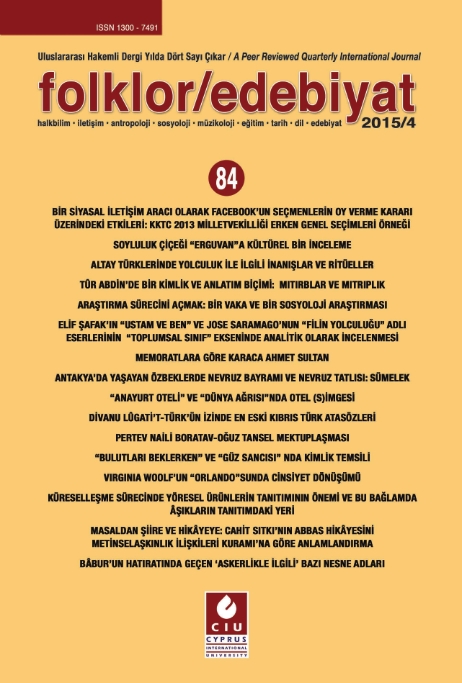Tûr Abdin’de Bir Kimlik Ve Anlatim Biçimi: Mitirblar Ve Mitriplik
An Indentity and Expression Form in Tûr Abdin: Mitirbs and Mitriplik
Author(s): Necat KeskinSubject(s): Cultural history, Music, Ethnohistory, Local History / Microhistory, Cultural Anthropology / Ethnology
Published by: Uluslararası Kıbrıs Üniversitesi
Keywords: Mıtrıb; Gypsies; Cultural İdentity; Fiddle;
Summary/Abstract: Located beetween the Euphrates and the Tigris rivers, Mesopotamia has been a multi-cultural, multi-ethnic region in the course of history. As a part of this geographic region, Mardin and around which is also named as Tûr-Abdin comes to forefront with its multicultural and multi-ethnic characteristic just like Mesopotamia in which it is placed. Beside the Kurds, Arabs, and Syrian ethnic groups, there are other religious and cultural groups such as Sayyids, Mihalmis and mıtırbs that conditionally define themselves among this ethnicities. In this article mıtırbs living in and around Mardin are subjected within the framework of music, ethnicity, identity terms, and the Mıtrıplık, the traditional narrative form which is also continued in some ways nowadays, is compared to the dengbêjlik, another narrative form which is valued as a ‘national’ form by Kurds. Mıtırbs are named as motreb, mıtrıp in different places and defined one of the Gypsies community who are doing music. They are perceived and defined in the same way in and around Mardin. However, mıtırbs often tend to define themselves in the ‘Kurdish’ ethnic identiy. The thing that comes to forefront in this definition is their ability to use Kurdish very well and their existence there for a long time. On the other hand in and around Mardin, mıtırbs are using kemançe, a 3-stringed musical instrument. This instrument is also a main element of the traditional narrative form, mıtrıplık. This traditional narrative form which is passed down from one generation to the next by means of culturation process, differs from the other narrative form, dengbêjlik, by the central importance of the used instrument, and the ‘identiy’ of the one who continues the tradition.
Journal: Folklor/Edebiyat
- Issue Year: 21/2015
- Issue No: 84
- Page Range: 57-72
- Page Count: 16
- Language: Turkish

